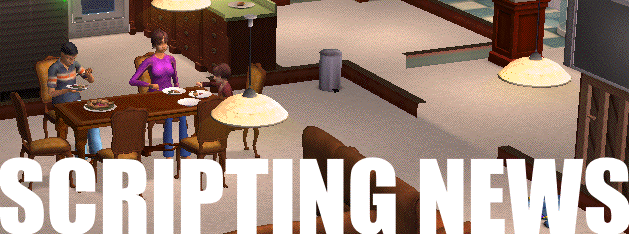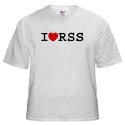
Facebook and subscriptions 
A few people sent me a pointer to an announcement of a new Facebook push to get publications to come inside their silo. This isn't imho news. They've been working on this for a long time. It was easy to see its size and shape based on the actions they were taking. Expect a lot of announcements from major news vendors that are participating. It's probably going to be all of them, and probably governments and educational institutions as well. I don't see this as a bad thing. It could be a very good thing, esp if more people are better informed as a result.
 People say they don't like that they're using what has become RSS trade dress. I don't have a strong opinion about this, at least not yet. It seems to me if what they provide works like RSS does, why shouldn't they use what has become a well-known symbol for it? Because their subscription process is sure to be a lot easier than RSS's? Maybe instead of stopping them, we should work on improving RSS's way of subscribing. Their advantage isn't technical, it's that people in the publishing industry are listening to them and doing what they want them to do. They could just as easily listen to someone who is doing it all with open formats and protocols. It's a political problem, not a technical one.
People say they don't like that they're using what has become RSS trade dress. I don't have a strong opinion about this, at least not yet. It seems to me if what they provide works like RSS does, why shouldn't they use what has become a well-known symbol for it? Because their subscription process is sure to be a lot easier than RSS's? Maybe instead of stopping them, we should work on improving RSS's way of subscribing. Their advantage isn't technical, it's that people in the publishing industry are listening to them and doing what they want them to do. They could just as easily listen to someone who is doing it all with open formats and protocols. It's a political problem, not a technical one.
I have no standing to ask them not to use the icons. I didn't design them, and I didn't even want them. It was a fragmentation of the RSS community at the time. It's there because Mozilla blazed a new trail and Microsoft went with them, and not the default that everyone else was using. I asked them not to do it, but they didn't do what I asked them to do.
The answer isn't to stop Facebook, even if you could. The correct response is to use this impetus to get an open solution organized and developed asap so we're not all dependent on Facebook to get the news to people who want to read it. If you think you can publish a news source with integrity in that context -- you can't.
So this is a good time to think and communicate, and then quickly, do.
New feature today 
Let's try some open development here on Scripting News.
I'm rolling out a new feature today. It's new stuff, so I hope it's like opening a novel to page one and finding strange characters you don't understand. But you keep reading anyway, hoping that the author will give you a page-turner plot.
I'm going to write this blog post the way I write my worknotes. It's where I think out loud. Or narrate my work. Either way is a valid way to look at it. I basically don't worry about who is listening in. Or when they're listening. Perhaps these notes will be useful someday when someone is trying to understand my code. Or perhaps to someone who is cloning my work. Either way.
Anyway, today's new feature is the beginning of a transition of the world outline to actually being viewed like an outline. How about that.
For years, it's been viewed as a directory structure. That's because my Javascript and CSS skills were almost non-existent. I had my head full of object databases and RSS and XML-RPC and such. This year I made room for JS and CSS. Now I understand them well enough to ship some relatively complex code that has a future (I hope) based on features implemented in the browser.
The idea
Expand and collapse in the browsing interface of the world outline.
The demo
Here's a demo of the feature. An outline of the Major League Baseball teams.
You can link from nodes in the outline to any other type of node, so it has all the power of OPML directories. This is important because I hope to transition the non-expandable directories to the new outline nodetype.
I've linked to a photo from a Mets game, from the Mets node in the outline. Look at the crumb trail above the picture. See how it travels through the outline. So not only is it a display structure, it's also a navigation structure. If you click any of those links, you'll go back to the outline. It's so natural it almost doesn't seem like a discrete feature (the best kind of feature).
The howto
Here's a howto that shows how an author would create one of these web-browsable outlines in the OPML Editor.
The architecture
See how URLs can be used to drill into an outline. This URL points to the Eastern Division of the National League.
A user
See how Adam Curry uses it for shownotes for his No Agenda podcast.
The OPML file
This is the OPML file for the MLB outline.
Observation -- the Set Nodetype command is your portal to happy hacking in the World Outline. It's how I got the Mets node to be a photo instead of just some text. I had to convert a copy of a thumbList node to be of type include so I could access its sub-nodes in the outliner. It blew me away when it worked, and the outline was connected to the photo from the Mets game in July.
New feature today 
Let's try some open development here on Scripting News.
I'm rolling out a new feature today. Almost everyone who reads this will lack the context to understand the feature. It's like opening a novel to page one and finding strange characters you don't understand. But you keep reading anyway, hoping that the author will give you a page-turner plot.
I'm going to write this blog post the way I write my worknotes. It's where I think out loud. Or narrate my work. Either way is a valid way to look at it. I basically don't worry about who is listening in. Or when they're listening. Perhaps these notes will be useful someday when someone is trying to understand my code. Or perhaps to someone who is cloning my work. Either way.
Anyway, today's new feature is the beginning of a transition of the world outline to actually being viewed like an outline. How about that.
For years, it's been viewed as a directory structure. That's because my Javascript and CSS skills were almost non-existent. I had my head full of object databases and RSS and XML-RPC and such. This year I made room for JS and CSS. Now I understand them well enough to ship some relatively complex code that has a future (I hope) based on features implemented in the browser.
The feature
Here's a howto that shows how an author would create one of these web-browsable outlines in the OPML Editor.
The demo
Here's a demo of the feature. An outline of the Major League Baseball teams.
You can link from nodes in the outline to any other type of node, so it has all the power of OPML directories. This is important because I hope to transition the non-expandable directories to the new outline nodetype.
I've linked to a photo from a Mets game, from the Mets node in the outline. Look at the crumb trail above the picture. See how it travels through the outline. So not only is it a display structure, it's also a navigation structure. If you click any of those links, you'll go back to the outline. It's so natural it almost doesn't seem like a discrete feature (the best kind of feature).
The architecture
See how URLs can be used to drill into an outline. This URL points to the Eastern Division of the National League.
The OPML file
This is the OPML file for the MLB outline.
Observation -- the Set Nodetype command is your portal to happy hacking in the World Outline. It's how I got the Mets node to be a photo instead of just some text. I had to convert a copy of a thumbList node to be of type include so I could access its sub-nodes in the outliner. It blew me away when it worked, and the outline was connected to the photo from the Mets game in July.



